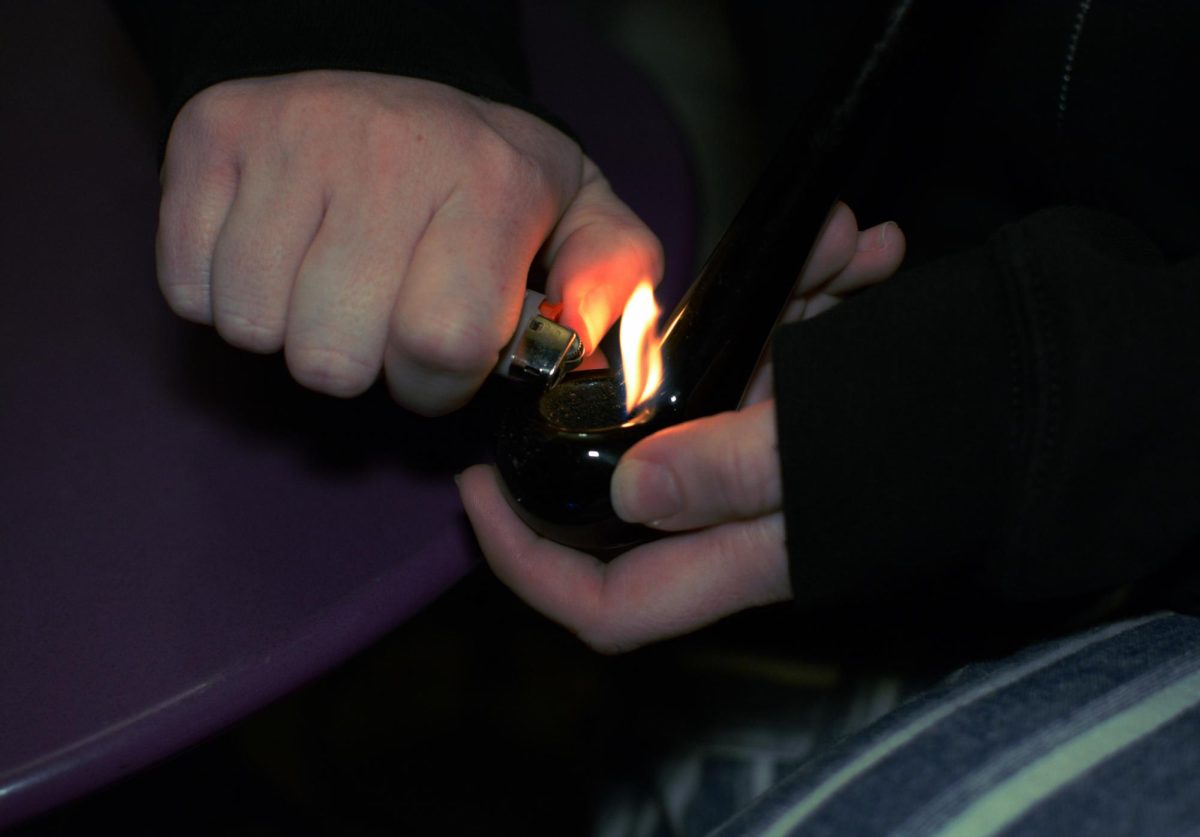
Bondage and Discipline. Domination and Submission. Sadism and Masochism. These six words form the common four-letter acronym “BDSM.” This concept has been brought to attention in the last few months with the anticipated Feb. 13, 2015 release of “Fifty Shades of Grey.”
While most people cringe upon finding out what the acronym stands for, there is a great deal of misconceptions about the dynamics of this relationship.
Ever since E.L. James’ “Fifty Shades” trilogy became a phenomenon in 2011 with the first book’s release, there have been many misrepresentations about relationships that involve BDSM elements.
Readers analyze the book as a true representation of real relationships with BDSM components, while, in reality, the relationship is being improperly depicted for what it really is, how it affects practitioners and how it is conducted.
For those who have not read “Fifty Shades of Grey,” the plot boils down to Anastasia Steele, a recent college graduate, falling under the spell of the illustrious Christian Grey, a successful and young businessman.
Little does Anastasia know what is in store for her until Christian shows her his “playroom” and reveals that he only likes his relationships if they have elements of BDSM in them.
Both Anastasia and Christian are mutually attracted to each other but Anastasia wants more than just a relationship with BDSM. She wants a romance, which Christian attempts with her more than with any of his other relationships.
During the course of the book, Anastasia contemplates whether she wants to sign a consensual agreement with Christian to be his submissive after already being involved in what Christian considers to be mild practices with questionable consent.
What exactly is BDSM? BDSM is essentially an umbrella term for erotic behavior conducted between consenting adults.
Relationships with components of BDSM are often conducted with “top” or “dominant” figures and “bottom” or “submissive” figures. The dominant figures are the ones who control the BDSM activities, exerting power over the submissive.
This power and control can be negotiated between the two parties, where the roles are clearly defined, or there can be a “switch” in which the parties swap to explore both sides of dominance and submission.
BDSM activities can range from mild to extreme, using anything from bondage and flogging to spanking and torture.
It offers more than just “vanilla sex” (sex without BDSM elements) for people who want to add some sort of power exchange to their relationships.
The dominant is fulfilled by exerting control over the submissive, while the submissive is fulfilled by serving and pleasing the dominant.
While some focus is on the physical pain, there is still a power dynamic in which one is expected to please the other, which is a defining factor of the relationship.
“What makes a relationship fulfilling is unique to the people involved in them,” said Tammy “Kaia” Bruski, an individual and relationships psychotherapist at N.O.S. Counseling, LLC in Denver. “We all have diverse sexual needs, desires, fetishes and attractions as part of our sexuality.”
“We all have diverse sexual needs, desires, fetishes and attractions as part of our sexuality.” —Tammy “Kaia” Bruski, individual and relationships psychotherapist
A relationship with BDSM components can turn into a romantic relationship. But, some dominant/submissive relationships see love as a distraction for the control the dominant has over the submissive, and it may not be as effective when it comes to control and punishment.
Others see love as a fundamental building block for a healthy relationship.
Consent is a key aspect of a relationship with BDSM elements. Without consent, the activities can be considered abuse, which is a common misconception of a BDSM lifestyle. This is one of the many alarming aspects of “Fifty Shades.”
There are many times throughout the course of the book when Anastasia does not fully consent to the power exchange with Christian.
While he does offer up a contract between the two of them, she is hesitant to sign for the entire course of the book but eventually succumbs to Christian’s control anyway.
The book ends up depicting power control in a sexy, romantic way without addressing key issues among BDSM practitioners, such as clear negotiation, communication and agreement.
Anastasia is under the impression that she should trust Christian because he is in the dominant role.
There are plenty of examples of non-consensual non-consent in which Anastasia is forced to submit and give up her power. According to Bruski, real-world BDSM practitioners would call this rape and abuse.
“I think it wrongly depicts a BDSM relationship as an abusive relationship,” said Caroline Gambardella, a sophomore psychology major. “It almost fetishizes abuse. The main character stalks the other main character until she agrees to his creepy non-disclosure agreement.
“It wrongly portrays a BDSM lifestyle. BDSM is formed on the basis of safety and comfort and that’s not really apparent in the book.”
“It wrongly portrays a BDSM lifestyle. BDSM is formed on the basis of safety and comfort and that’s not really apparent in the book.” — Caroline Gambardella, a sophomore psychology major
An educator and columnist on adventurous sexuality, who visited CSU last fall, Midori said that relationships that involve components of BDSM are “three-dimensional” just like any other relationship and not solely just about the kink involved.
“It’s no different than if sex is part of your relationship,” Midori said in response to relationships with components of BDSM being referred to as “BDSM relationships.” “Your relationship wouldn’t be called a ‘sex relationship.’”
The point is that like any other relationship, BDSM elements are just one aspect, not the defining factor, as most people associate it with.
Relationships with components of BDSM are complicated relationships and should in no way have any underlying notions about the practitioner’s life.
“In my opinion, I believe S&M is along the lines of a fetish practiced between two consenting adults,” said Emily Nauta, a first year transfer biology major. “Personally, I wouldn’t partake, but I think it was interesting to read an author’s take on it [in ‘Fifty Shades of Grey’].”
Another misconception about BDSM is that because the majority of males are dominants, this brings about the issue of gender roles.
A set of statistics as part of a 2013 study conducted by the International Society of Sexual Medicine report that 48 percent of males are in a dominant role, while 76 percent of males are in a submissive role.
According to Midori, the roles “aren’t always accurate.” They depend on the type of person; the notion that all dominants are males is very “19th century Freudian,” according to Midori.
“The roles can be based on personal characteristics and what role they would like to play in the bedroom,” Midori said. “Someone who is powerful and controlling in their career could want to be controlled in the bedroom.”
The question still remains: are there any psychological differences in those who practice BDSM compared to those who do not?
In the same 2013 study published by the International Society for Sexual Medicine, researchers looked at the relation between personality and sexual practices.
Andreas A.J. Wismeijer, Ph.D., and Marcel A.L.M. van Assen, Ph.D., studied BDSM practitioners on the “big five” personality traits: neuroticism (negative moods), agreeableness (kindness, affection), extraversion (socialability), openness to experience (imagination, creativity) and conscientiousness (thoughtfullness). Researchers also analyzed factors of rejection sensitivity, attachment style and subjective well-being.
The study took a control group of participants who did not participate in BDSM and compared them to a group who did practice in BDSM. Each group was then given surveys on various types of personality traits.
Wismeijer and van Assen found that practitioners of BDSM scored higher than the control group in extraversion, openness to experience and conscientiousness and scored lower on neuroticism and agreeableness.”
However, there were differences between the dominant and the submissive in terms of how they answered to certain traits. Dominants scored lowest of all the groups in neuroticism, while submissives scored higher on extraversion.
Based on these findings, it is expected that those who practice BDSM would be more open to sexual experience.
On the other hand, it is also expected that dominants would have a low level of agreeableness since they aim to exert power over the submissive with little compromise.
Another common notion is that the desire to practice BDSM comes from childhood sexual abuse or being insecurely attached.
This study mentions that the “data do not support the persistent assumption that BDSM is associated with inadequate developmental attachment processes.”
This is due to the fact that dominants scored the highest on attachment, whereas the control group scored the lowest.
The depiction of BDSM in literature is nothing new.
People (especially women) were ecstatic when “Fifty Shades” came out, but one of the most well-known pieces of literature depicting BDSM activities is “Story of O,” a French erotic novel written by Pauline Réage.
According to Midori, at the time, “Story of O” was rather scandalous, like “Fifty Shades,” but is now considered “a real piece of literature.”
While “Fifty Shades of Grey” is this generation’s erotic novel, there are many details in the relationship between Christian Grey and Anastasia Steele that misrepresent those who practice BDSM in real life.
BDSM is a complicated subject matter in that it is not just a two-dimensional concept that defines a relationship, but a concept that involves many psychological and logistical aspects.
It is important that we educate ourselves on the differences between what is depicted in literature and what is true in real life.
“‘Fifty Shades of Grey” teaches girls that an abusive and dangerous partner is normal and romantic,” said Michelle Sogge, a junior food science and human nutrition major. “Anastasia constantly has her safety (both physically and mentally) threatened by a possessive boyfriend who goes against many of the BDSM community values, such as trust, safe words and respect.”
This article was created for College Avenue’s Love, Sex and Relationships issue.




































